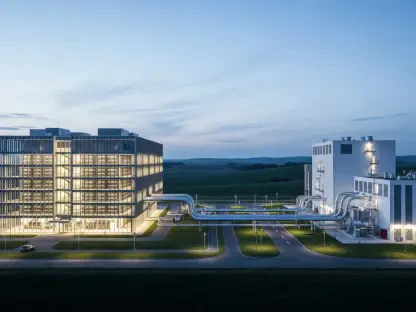Today, we’re diving into a critical environmental issue with Christopher Hailstone, a renowned expert in energy management and utilities. With his deep knowledge of renewable energy and grid reliability, Christopher offers a unique perspective on the complex interplay between industrial operations and environmental policy. We’re focusing on the upcoming public hearing for the Drax biomass plant in Gloster, Mississippi, where the company is seeking to increase emissions limits. Our conversation explores community concerns, regulatory challenges, the plant’s environmental track record, and the broader implications for health and the local economy.
Can you walk us through what’s happening with the public hearing for Drax in Jackson on October 14?
Certainly. The hearing is a pivotal moment for the Drax biomass plant in Gloster, Mississippi. Drax is appealing a decision made by the Mississippi Environmental Quality Permit Board, which denied their initial request in April to increase emissions limits and reclassify the facility as a “major” source of hazardous air pollutants, or HAPs. This appeal has led to an evidentiary hearing where both sides—Drax and the community—will present evidence and arguments. It’s a chance for regulators to reconsider whether the plant should be allowed to emit more pollutants, and it’s drawing significant attention due to the potential impact on air quality in a small town of about 900 people.
What are the primary worries from the Gloster community about this potential increase in emissions?
The residents of Gloster are deeply concerned about how this could degrade their air quality. They fear that higher emissions will bring more toxic pollutants into their environment, which could directly affect their health. Specific worries include respiratory issues and other conditions linked to pollutants like dust, acrolein, and methanol. For a small, close-knit community, the idea of living with increased health risks for the sake of industrial expansion feels like a raw deal, and they’re pushing hard for regulators to prioritize their well-being over corporate interests.
How would you explain the significance of Drax being classified as a ‘major’ source of hazardous air pollutants?
Being classified as a “major” source of HAPs means the facility would be recognized as emitting significant amounts of toxic substances that can harm human health and the environment. This designation comes with stricter regulatory oversight under federal and state laws, like the Clean Air Act. It often requires more rigorous monitoring, reporting, and control measures to limit emissions. For Drax, this could mean operational changes to comply with tighter standards, but it also signals to the public and regulators that the plant poses a higher risk, which is why this classification is so contentious.
What kinds of pollutants are typically associated with a facility like Drax, and why do they matter?
Biomass plants like Drax, which produce compressed wood pellets for energy, often emit a range of pollutants. These include particulate matter, or dust, which can irritate lungs, as well as chemicals like acrolein and methanol, which are known to be toxic at certain levels. These pollutants matter because they can contribute to serious health issues, from asthma to more severe long-term conditions, especially in communities living close to the source. The concern is not just the quantity of emissions but the cumulative effect on air quality over time, particularly for vulnerable populations like children and the elderly.
Looking at Drax’s history, what can you tell us about their compliance with environmental regulations?
Drax’s track record in Gloster hasn’t been spotless. Over the past decade, the plant has faced multiple permit violations and fines for not adhering to environmental standards. One of the most notable penalties came in 2021, when they were hit with a $2.5 million fine under the Clean Air Act—one of the largest in Mississippi’s history. This penalty was tied to significant breaches in emissions control and reporting, underscoring a pattern of challenges in meeting regulatory expectations. It’s raised questions about whether the company can be trusted to manage increased emissions without further issues.
Drax claims their new permit applications include improved monitoring and control measures. How do you view these proposed changes?
On paper, enhanced monitoring and controls sound promising. If implemented effectively, they could help detect and reduce emissions before they become a problem. However, the real test lies in execution and enforcement. Past violations make people skeptical about whether Drax will follow through or if these are just assurances to get the permit approved. I think it’s crucial for regulators to set clear, measurable benchmarks and ensure consistent oversight to hold the company accountable. Without that, these promises might not translate into meaningful improvements for air quality.
Drax has warned that denying the permits could hurt the local and state economy. Can you unpack what they mean by that?
Drax is likely pointing to the economic contributions their facility makes to Gloster and Amite County, as well as Mississippi as a whole. This includes jobs at the plant, revenue for local businesses, and tax contributions that support public services. They’re arguing that restricting their operations could lead to layoffs or reduced economic activity, which would hit a small community like Gloster hard. However, this argument needs to be weighed against the potential costs of pollution—healthcare expenses, loss of quality of life, and even long-term economic damage if the area becomes less livable. It’s a tough balance to strike.
What do you anticipate will unfold during the evidentiary hearing in Jackson?
The hearing will be a detailed and likely intense process. Both Drax and community representatives will have the opportunity to present evidence, bring in experts, and cross-examine witnesses. Drax will probably focus on their proposed controls and economic benefits, while the community and environmental advocates will emphasize health risks and past violations. It’s also a public forum, so expect strong emotions and possibly a rally from environmental justice groups supporting Gloster residents. The outcome will hinge on how convincingly each side makes their case and whether regulators prioritize public health or industrial growth.
What is your forecast for the future of biomass facilities like Drax in terms of balancing energy needs with environmental protection?
I think biomass facilities will remain a part of the energy mix, especially as we transition to renewables, but their future depends on stricter regulations and better technology. The push for cleaner air will only grow stronger, especially in communities directly impacted by emissions. Facilities like Drax will need to invest heavily in pollution control and transparency to maintain public trust and regulatory approval. My forecast is that we’ll see a gradual shift toward more sustainable practices, but it will require constant pressure from communities, advocates, and policymakers to ensure environmental protection isn’t sacrificed for energy demands.









